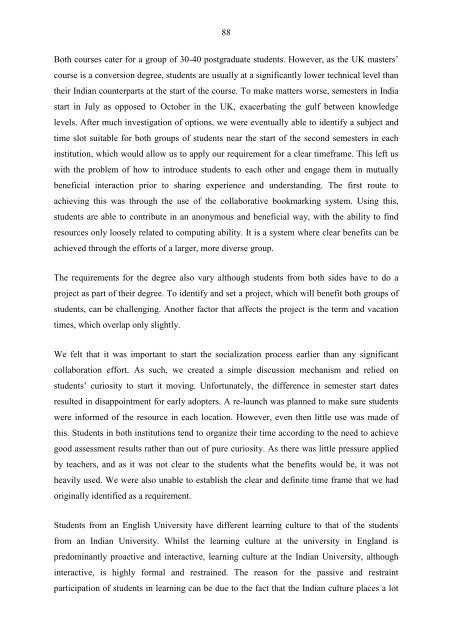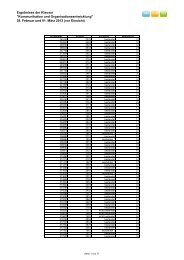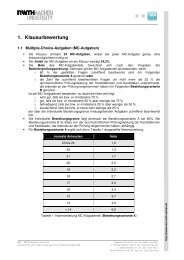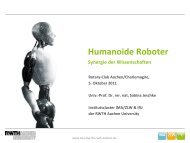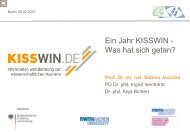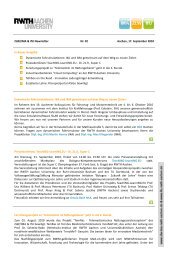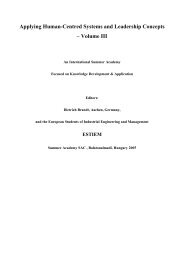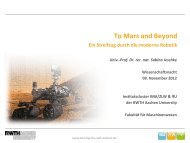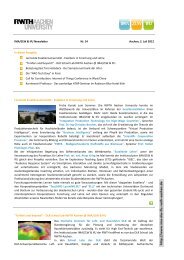Vol. II: Shaping Information and Communication ... - IMA,ZLW & IfU
Vol. II: Shaping Information and Communication ... - IMA,ZLW & IfU
Vol. II: Shaping Information and Communication ... - IMA,ZLW & IfU
Create successful ePaper yourself
Turn your PDF publications into a flip-book with our unique Google optimized e-Paper software.
88<br />
Both courses cater for a group of 30-40 postgraduate students. However, as the UK masters’<br />
course is a conversion degree, students are usually at a significantly lower technical level than<br />
their Indian counterparts at the start of the course. To make matters worse, semesters in India<br />
start in July as opposed to October in the UK, exacerbating the gulf between knowledge<br />
levels. After much investigation of options, we were eventually able to identify a subject <strong>and</strong><br />
time slot suitable for both groups of students near the start of the second semesters in each<br />
institution, which would allow us to apply our requirement for a clear timeframe. This left us<br />
with the problem of how to introduce students to each other <strong>and</strong> engage them in mutually<br />
beneficial interaction prior to sharing experience <strong>and</strong> underst<strong>and</strong>ing. The first route to<br />
achieving this was through the use of the collaborative bookmarking system. Using this,<br />
students are able to contribute in an anonymous <strong>and</strong> beneficial way, with the ability to find<br />
resources only loosely related to computing ability. It is a system where clear benefits can be<br />
achieved through the efforts of a larger, more diverse group.<br />
The requirements for the degree also vary although students from both sides have to do a<br />
project as part of their degree. To identify <strong>and</strong> set a project, which will benefit both groups of<br />
students, can be challenging. Another factor that affects the project is the term <strong>and</strong> vacation<br />
times, which overlap only slightly.<br />
We felt that it was important to start the socialization process earlier than any significant<br />
collaboration effort. As such, we created a simple discussion mechanism <strong>and</strong> relied on<br />
students’ curiosity to start it moving. Unfortunately, the difference in semester start dates<br />
resulted in disappointment for early adopters. A re-launch was planned to make sure students<br />
were informed of the resource in each location. However, even then little use was made of<br />
this. Students in both institutions tend to organize their time according to the need to achieve<br />
good assessment results rather than out of pure curiosity. As there was little pressure applied<br />
by teachers, <strong>and</strong> as it was not clear to the students what the benefits would be, it was not<br />
heavily used. We were also unable to establish the clear <strong>and</strong> definite time frame that we had<br />
originally identified as a requirement.<br />
Students from an English University have different learning culture to that of the students<br />
from an Indian University. Whilst the learning culture at the university in Engl<strong>and</strong> is<br />
predominantly proactive <strong>and</strong> interactive, learning culture at the Indian University, although<br />
interactive, is highly formal <strong>and</strong> restrained. The reason for the passive <strong>and</strong> restraint<br />
participation of students in learning can be due to the fact that the Indian culture places a lot


